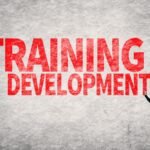HR Policies and Procedures: Creating a Foundation for Organizational Success
In every organization, effective Human Resources (HR) policies and procedures are crucial for establishing a harmonious work environment, promoting fairness, and ensuring compliance with legal and ethical standards. HR policies and procedures serve as a guiding framework for managing employees and addressing critical aspects of employment.
In this blog, we will explore the importance of HR policies and procedures, their key components, and their impact on organizational success. Defining HR Policies and Procedures: HR policies are a set of guidelines and principles that outline the organization’s expectations and rules regarding employee behavior, rights, and responsibilities.
Procedures, on the other hand, are the specific steps or actions to be followed when implementing those policies. Importance of HR Policies and Procedures: a) Consistency and Fairness: Policies and procedures establish consistent practices, ensuring that employees are treated fairly and equitably throughout the organization. They provide a clear framework for decision-making, minimizing bias or favoritism. b) Legal Compliance: HR policies and procedures ensure compliance with labor laws, industry regulations, and non-discrimination laws.
By staying up-to-date with legal requirements, organizations can mitigate legal risks and avoid costly lawsuits. c) Employee Guidance: Policies and procedures provide employees with clear guidelines on expected behavior, performance standards, and consequences for policy violations. They also outline employee rights, benefits, and grievance procedures, empowering employees to understand and assert their rights. d) Organizational Culture: HR policies and procedures play a significant role in shaping the organization’s culture and values. When policies align with the organization’s mission and vision, they foster a positive work environment and promote employee engagement and satisfaction. Key Components of HR Policies and Procedures: a) Recruitment and Selection: Policies should outline the hiring process, job posting methods, interview guidelines, and applicant evaluation criteria. They should also address diversity and inclusion principles to ensure a fair and unbiased hiring process. b) Code of
Conduct and Ethics: A well-defined code of conduct sets expectations for employee behavior, professional ethics, and standards of integrity. It should cover topics such as conflicts of interest, confidentiality, and acceptable use of company resources. c) Performance Management: Policies should define the performance evaluation process, including goal setting, feedback mechanisms, and performance improvement plans.
Clear performance standards and expectations should be communicated to all employees. d) Employee Benefits and Compensation: Policies should cover employee benefits, such as health insurance, retirement plans, vacation, and sick leave. Additionally, compensation policies should address salary structures, pay scales, and performance-based incentives. e) Employee Relations: Policies should outline procedures for conflict resolution, harassment prevention, and employee grievances. They should promote a respectful and inclusive work environment while providing channels for employees to voice concerns. f) Leave and Attendance: Policies should define various types of leave, such as parental leave, sick leave, and vacation policies. Attendance policies should establish guidelines for punctuality, absenteeism, and time-off requests.
Implementing and Communicating HR Policies and Procedures: To ensure successful implementation, organizations should consider the following steps: a) Thoroughly develop and review policies in consultation with legal advisors and relevant stakeholders. b) Clearly communicate policies to all employees through employee handbooks, intranets, and training sessions. c) Regularly review and update policies to adapt to changing legal requirements and organizational needs. d) Provide training to employees and managers on policy understanding, compliance, and enforcement. Conclusion: HR policies and procedures are the backbone of any organization’s HR framework. By establishing consistent guidelines, promoting fairness, and ensuring legal compliance, they create a foundation for organizational success. Well-designed policies and effective communication foster a positive work environment, enhance employee engagement, and contribute to the organization’s overall performance and reputation.


































